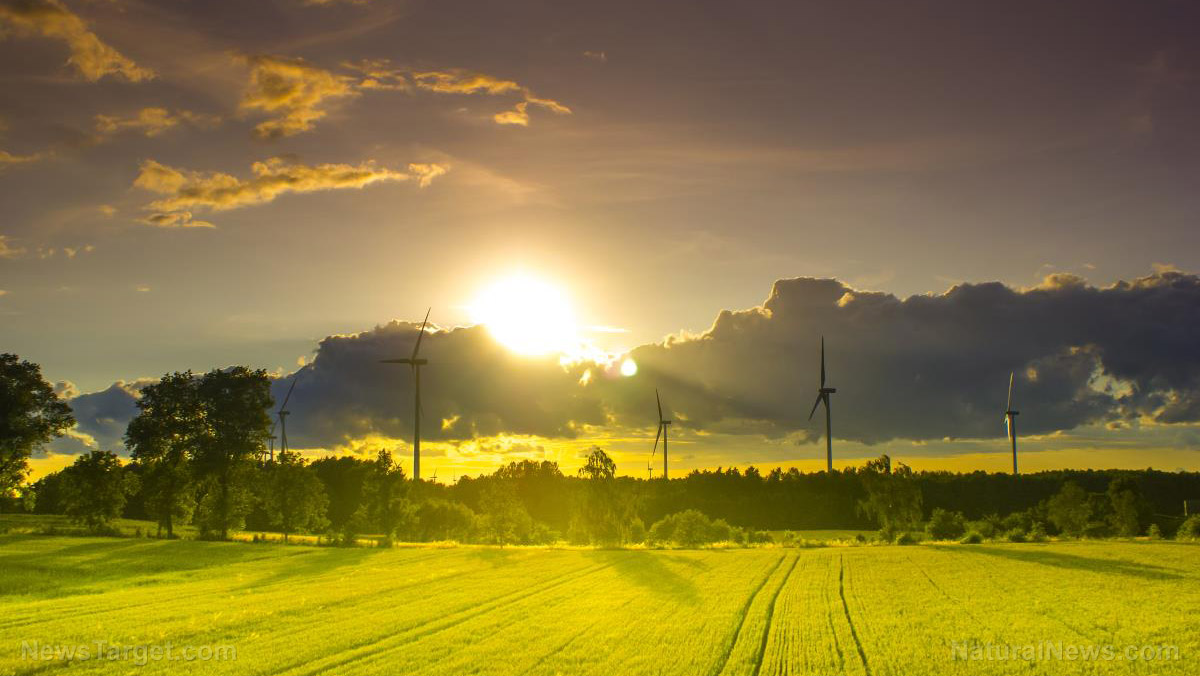Protecting eagles: Researchers develop detection and deterrent system to reduce wildlife casualties from wind turbines
05/10/2018 / By Janine Acero

Wind turbines have been used to generate wind power, which is generally regarded as clean energy. However, wind turbines have killed numerous bats and birds, including golden eagles and bald eagles, which are federally protected species. Researchers have come up with a solution to minimize these deaths in a study published in Wind Energy.
The researchers have set up a detection system using vibration sensors mounted to turbine blades that can tell if a bird or a bat hits a turbine. In addition, the sensor can identify what species was involved in the collision.
The U.S. Fish and Wildlife Service estimates there are roughly 143,000 bald eagles and 40,000 golden eagles in the country. While hitting any flying animal is sad and unfortunate, it’s not as critical as striking a protected species such as a golden eagle, according to Roberto Albertani, Boeing Professor of Mechanical Engineering Design at Oregon State University. A large species such as eagles could also “potentially trigger down time in turbine operations and losses in revenue.”
Wind power is a growing source of clean energy in the U.S. alongside solar power. Wind power generators use towers up to 300 feet tall, and turbine blades with wingspans double that of a Boeing 747, moving close to 200 miles per hour.
Impact on wildlife habitats and ecosystems
At land-based wind farms, collisions and mortality rates are typically assessed by carcass surveys and long-term visual monitoring. However, factors such as “surveyor error and carcass removal by scavengers” can affect the accuracy of the data. In addition, these methods are said to be “expensive or not feasible at remote locations or other sites like agricultural fields, dense shrub habitats, or in offshore turbine operations.”
The researchers developed an integrated system that auto-detects collision through a vibration sensor at the base of a blade, an acoustic sensor on the generator that will pick up bird sounds, and an optical camera on the tower base.
The research team then tested the system at the National Renewable Energy Laboratory Wind Technology Center in Boulder, Colorado using a compressed-air launcher, firing tennis balls at the turbines to simulate bird impacts.
The researchers noted that the system was able to detect hits by any sensors installed on the three blades, which indicated that not all blades of a turbine need to be equipped with sensors to detect impacts. “This study demonstrates the feasibility of an impact detection system based on vibration sensors,” said Albertani.
The team explained that the system would have a computer-connected camera that could identify the bird species that may approach the turbines. If the bird is an eagle, the computer would trigger a ground-level kinetic deterrent in the form of moving images of brightly colored people, designed to play into the eagles’ natural aversion to humans.
The team hopes the system could help create safer wind power generators to minimize casualties with the surrounding wildlife.
In a similar vein, wind turbine collisions reportedly kill hundreds of bats in the U.K. each month. Ecological impact assessments were said to have failed at predicting the risk of wind farms to habitats and wildlife. The researchers at the University of Exeter found that collisions resulted in estimated death rates of up to 64 fatalities per month. This is despite mitigation efforts to reduce the impacts such as moving the turbines away from woodland. (Related: Wind turbines kill almost 1 million bats per year, because they confuse them with trees.)
“At the moment tens if not hundreds of thousands of pounds are paid on infrastructure projects all the time to do ecological surveys with nobody actually doing any follow-ups to see whether they’re effective or not,” said Dr. Fiona Mathews, lead author of the study published in Current Biology.
Head over to Power.news to learn more about the impact of wind farms on the surrounding wildlife.
Sources include:
Tagged Under: alternative energy source, animal casualties, Clean Energy, conservation, eagles, ecosystem, energy sources, green energy, green power, renewable energy, renewable energy danger, wildlife, wildlife safety, wind energy, wind farms, wind power, Wind Turbines, windmills
RECENT NEWS & ARTICLES
COPYRIGHT © 2017 ENVIRON NEWS




















